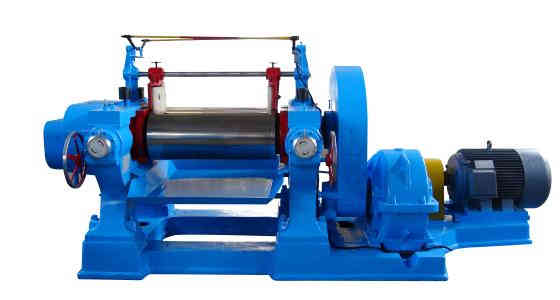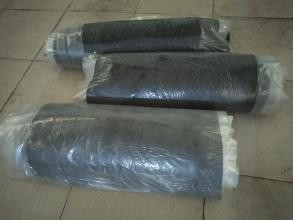How to Make Rubber Hose
- Written by Super User
- font size decrease font size increase font size
1 overview
The main raw materials of rubber products are raw rubber, various complexes, as well as fiber and metal materials as skeleton materials, the basic production process of rubber products includes plastic refining, mixing, calendering, pressing, molding, vulcanization 6 basic processes.
Rubber processing process is mainly to solve the plastic and elastic contradictions of the process, through a variety of processing means, so that elastic rubber into plastic plastic rubber, in the addition of a variety of complexes to make semi-finished products, and then through vulcanization is plastic semi-finished products and become high elasticity, physical and mechanical properties of rubber products.
2 Rubber processing Technology
2.1 Plastic Refining Process

Raw rubber molding is the process of transforming raw rubber from a strong elastic state to a soft, easy-to-process plastic state by means of mechanical stress, heat, oxygen, or the addition of certain chemical reagents.
The purpose of raw rubber molding is to reduce its elasticity, increase plasticity, and obtain appropriate fluidity to meet the requirements of various processing processes such as mixing, sub-perfunctory, calendering, molding, vulcanization and sizing, sponge gum manufacturing, etc. Mastering the appropriate plastic plasticizing degree is very important to the processing of rubber products and the quality of finished products. The plasticizing degree should be reduced as much as possible under the premise of meeting the processing process requirements.
With the appearance of constant viscosity rubber and low viscosity rubber, some rubber no longer need to be molded and directly mixed. In the rubber industry, the most commonly used plastic refining methods are mechanical plastic refining and chemical plastic refining method. The main equipment used in mechanical plastic refining is open rubber refining machine, closed-type rubber refining machine and screw plastic refining machine.
Chemical plastic refining is a method of adding chemicals to the process of mechanical plastic refining to improve the effect of plastic refining. The temperature of the opening machine is generally less than 80 ℃, belonging to the low temperature mechanical mixing method.
The dispensing temperature of the mixer and the screw mixer is more than 120 ℃, or even up to 160-180 ℃, which belongs to the high temperature mechanical mixing.
Raw rubber before mixing needs to be pre-baked glue, cutting glue, glue selection and breaking glue and other treatment in order to plastic.
The plastic refining characteristics of several kinds of glue:
When the natural rubber is molded by the opener, the roller temperature is 30-40 ℃, the time is about 15-20min, and when the temperature reaches more than 120 ℃, the time is about 3-5min.
The door and viscosity of butadiene rubber is more than 35-60, therefore, butadiene rubber can not be molded, but after plastic can improve the dispersion of the mating machine Butadiene rubber has cold flow and lacks the effect of plastic refining.
The door and viscosity of maleic gum is low, but it can not be molded.
Neoprene rubber has a large plasticity, before the plastic can be thin through 3-5 times, thin pass temperature in 30-40 ℃.
The molecular main chain of ethylene propylene rubber is saturated structure, plastic smelting is difficult to cause molecular cracking, so to choose the low viscosity of the varieties rather than plastic. Nitrile rubber has small plasticity, high toughness and high heat during plastic refining.
When opening, the use of low temperature 40 ℃ below, small roller distance, low capacity and sectional molding, so that you can receive a better effect.
2.2 Mixing

Mixing process Mixing refers to the process of mixing all kinds of complexes evenly into raw rubber on the rubber refining machine. The quality of mixing is a decisive impact on the further processing of the adhesive and the quality of the finished product, even if the formula is good glue, if the mixing is not good, there will be uneven dispersion of the mixture, glue can be molded high or too low, easy to scorch, spray, etc., so that calendering, pressing, glue and vulcanization processes can not be carried out
It can also lead to a decrease in the performance of the product. The mixing method is usually divided into two kinds, such as the mixing of the opener and the mixing of the mixer.
Both methods are intermittent mixing, which is by far the most extensive method.
The mixing process of the opener is divided into three stages, that is, the roller (the softening stage of adding raw rubber), the eating powder (adding powder to the mixing stage) and the inversion (after eating the powder so that the raw rubber and the mating agent have reached the stage of uniform dispersion). The mixer mixture is different according to the type, use and performance requirements of the adhesive, and the technological conditions are different. Mixing should pay attention to the amount of glue, feeding order, roll distance, roll temperature, mixing time, roller speed and speed ratio and other factors.
Can not mix insufficient, and can not be too refined. Mixer mixing is divided into three stages, that is, moist, dispersed and nirvana, mixer mixing stone under high temperature pressure.
The operation method is generally divided into a section of mixing method and two-segment mixing method. A mixing method refers to the method of mixing glue by mixing the mixer once, and then pressing the film. He is suitable for all natural rubber or mixed with synthetic rubber not more than 50% of the glue, in a mixing operation, often the use of batch gradual feeding method, in order to make the adhesive does not rise violently, generally the use of slow mixer, can also use a two-speed mixer, add sulfur temperature must be less than 100 ℃.
Its feeding order makes a living glue-small material-reinforcing agent-filler-oil softener-discharge-cooling-plus sulfur and super propellant. The two-stage mixing method refers to the method of mixing glue made two times by mixing the pressure plate of the mixer. This method is suitable for the shortcoming that the content of synthetic rubber is more than 50%, and it can avoid the disadvantages of long mixing time and high glue temperature in the process of mixing method. The first stage of mixing, like a mixing method, is only a non-vulcanized and active propellant, after a mixing of the next piece of cooling, parking a certain amount of time, and then a second phase of mixing. Mix evenly in the back of the rear to expect to add vulcanizing agent on the tablet, after the inversion of the next film. The sectional mixing method has a short time, the mixing temperature is lower, the coordination agent is more evenly dispersed, and the quality of the adhesive is higher.